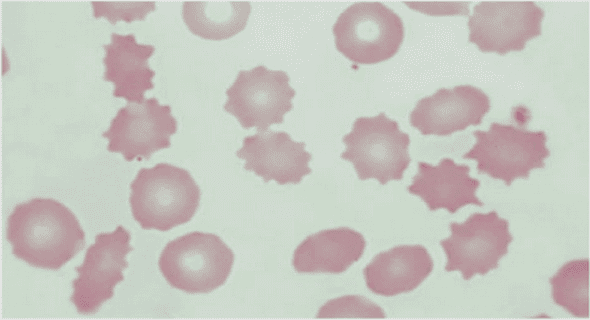(Downloads - 0)
For more info about our services contact : help@bestpfe.com
Table of contents
Chapter 1: General introduction
I- Pathogen characteristics and host response to infection
II- Q fever in Humans
1. Routes of transmission to humans
2. Clinical manifestations
3. Magnitude and distribution of human Q fever in the European Union
III- Q fever in domestic ruminants
1. Modes of contamination
2. Clinical manifestations
3. Characteristics of the bacterial shedding
4. Diagnosis
5. Magnitude and distribution in the European Union
6. Control
IV- Why a modelling approach to understand C. burnetii infection and assess control strategies?
1. Why not field observations?
2. Roles of epidemiological modelling
3. An example of epidemiological model in animal health
V- Objective and outline of the thesis
Chapter 2: Elaboration of a model representing the spread of C. burnetii within a dairy herd and estimation of its main parameters from data
I- Some generalities on how to build a model and to confront it to data
1. Choice of the model structure
2. Choice of the mathematical formalism
3. Confrontation of the model to data
II- The modelling of C. burnetii spread within a dairy cattle herd.
1. Description of the data set used for parameter estimation (data set A).
2. Description of the data used to define some of the prior distributions (data set B)
3. Modelling assumptions
III- Manuscript: Spread of Q fever within dairy cattle herds: key parameters inferred using a Bayesian approach
1. Abstract
2. Introduction
3. Data
4. Model and methods
a. Epidemic model
b. Bayesian framework
c. Bayesian inference: calculation of the posterior distribution of the model parameters from likelihood and prior distribution
d. Model adequacy
5. Results
a. Parameters of transition between health states
b. Environment-related parameters
c. Checking of model adequacy for the data
6. Discussion
7. Acknowledgements
8. Supplementary material
a. Data
b. Likelihood
c. Convergence of the MCMC algorithm
d. Posterior and prior distributions of transition and shedding parameters
e. Posteriors and priors of the environment
f. Summary statistics for the initial real health states
Chapter 3: Representation of the heterogeneity of shedding in the model of within herd spread of C. burnetii and identification of the most influential parameters of the infection dynamics
I- Why and how to represent heterogeneity in host population?
1. Two classic examples of heterogeneity in human diseases: sexually transmitted infections and childhood diseases
2. Superspreading events occur in many infectious diseases
II- The heterogeneity of shedding in C. burnetii infections
1. Shedding routes
2. Shedding levels
III- Why and how to perform a sensitivity analysis?
1. Aims of sensitivity analyses
2. How to perform sensitivity analysis?
3. Types of methods
IV- Manuscript: Modelling the effect of heterogeneity of shedding on the within herd Coxiella burnetii spread and identification of key parameters by sensitivity analysis
1. Abstract
2. Introduction
3. Model
a. General description
b. Initial conditions and parameter values of the standard scenario
4. Sensitivity analysis
a. Outputs and factors
b. Design of experiments
c. Analysis of the temporal outputs (of the first, second and third experiments)
d. Analysis of the extinction rate (of the second experiment)
e. Analysis of the outputs at a the time point 260 (of the first, second and third experiments)
5. Results
a. Infection dynamics of the standard scenario
b. Influence of the epidemiological factors on the model outputs
6. Discussion
7. Conclusion
8. Acknowledgements
Chapter 4: Assessment of the comparative effectiveness of three vaccination strategies in C. burnetii infection
I- Why and how to include vaccination in models?
1. Different types of vaccination programmes and their representation in epidemic modelling
2. An example of model aimed at assessing the effectiveness of vaccination
II- Manuscript: Modelling effectiveness of herd level vaccination against Q fever in dairy cattle
1. Abstract
2. Introduction
3. Materials and methods
a. General description of the epidemic model of the natural course of infection
b. Representation of the vaccination
c. Vaccination scenarios
d. Parameters and initial conditions
e. Outputs of the model
4. Results
a. Description of the herds at the start the vaccination strategy
b. Influence of the vaccination scenarios on the temporal model outputs
c. Influence of the pv values on the model dynamics
d. Influence of the vaccination scenarios and of the pv values on the extinction rate
5. Discussion
6. Acknowledgements
7. Supplementary material
Chapter 5: General discussion
I- Major findings
II- Comments on the modelling approach, inference and model analysis.
1. Choice of the mathematical formalism
2. Choice of the model structure
3. Estimation of main epidemiological parameters
4. Sensitivity analysis
5. Simulation of control strategies
III- Available and required data for model conceptualization, inference and validation
IV- Implications and perspectives
References



